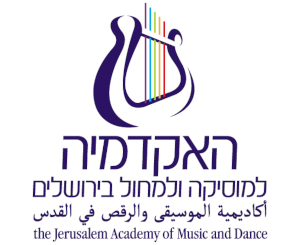Written Exam
- Note writing (pitch and duration) in treble and bass clefs.
- Identifying and writing various ascending and descending intervals (perfect, major, minor, augmented and diminished); identifying and writing interval inversions; classification of intervals into consonances and dissonances within an octave.
- Mastering the circle of fifths.
- One-part dictations in major or minor modes (in scales with no more than 4 flats or sharps).
- Identifying and writing numerous meters and rhythmic patterns.
- Identifying and writing triads (major, minor, augmented and diminished), and dominant seventh chords, in all types of inversions.
- Transposing a given melody.
- Explaining basic music terms (dynamics, tempo, articulation, form, texture, genre etc.)
Oral exam
- Singing and identifying the following patterns:
- Ascending and descending melodic intervals within an octave.
- Triads and dominant seventh chords in all inversions.
- Major and minor scales (including natural harmonic and melodic minor scales).
- Sight singing a diatonic melody.
- Rhythmic aspects: Identifying and writing rhythmic patterns which include division and sub-division of the beat, triplets, rests and ties, in basic, duple and triple meters (2/8, 2/4, 3/8, 3/4), as well as in compound meters (4/4 and 6/8).
Instrument examination – minimum requirements
|
Instrument |
Practical examination |
|---|---|
|
Piano |
1.Sight reading. |
|
2.Work from the Baroque period:Bach, Handel, Scarlatti, etc. |
|
|
3. Classic sonata by Haydn, Mozart or Beethoven, in its entirety. |
|
|
4.Romantic work:Schubert, Schumann, Chopin, Brahms, etc. |
|
|
5.Contemporary work. |
|
|
When submitting registration forms for the examinations, applicants are requested also to submit the entrance examination program for approval by the head of the department. |
|
|
Cembalo |
1.Work from the Renaissance or early Baroque period:Frescobaldi, Froberger, Beard, etc. |
|
2.Work from the French Baroque period:Couperin, Rameau, etc. |
|
|
3.Work from the late Baroque period:Bach, Handel, Scarlatti, etc. |
|
|
Organ |
1.Work from the Renaissance or early Baroque period. |
|
2. Prelude and fugue by J.S. Bach or another work by Bach of a similar degree of difficulty. |
|
|
3. Work by F. Mendelssohn or another Romantic work. |
|
|
Accordion |
1.Work by Bach or Handel, or any other multi-part work. |
|
2.Athree-movement work from the Classical period (for example – the introduction to Rossini’s Barber of Seville). |
|
|
3.Etude. |
|
|
4.A folk music arrangement (such as Israeli or Romanian dances, etc), or a contemporary work in any style – jazz, light music, etc. |

